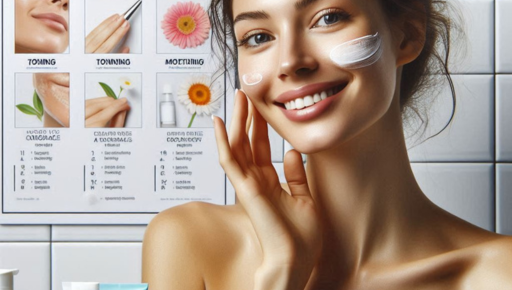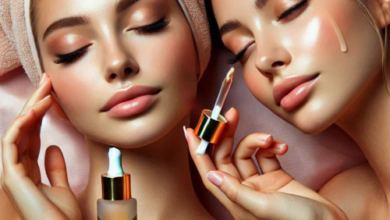Retinol, a form of Vitamin A, is widely celebrated for its powerful anti-aging properties. It’s one of the most effective ingredients for reducing the appearance of fine lines, wrinkles, and uneven skin tone, making it a staple in many skincare routines. However, despite its proven benefits, retinol can be tricky to use, especially for those who are new to the ingredient. If you’re wondering how to incorporate retinol into your skincare routine, you’re not alone.
In this article, we’ll break down what retinol is, how to use it correctly, and how to gradually introduce it into your routine for the best results without causing irritation.
What is Retinol?
Retinol is a form of Vitamin A that is commonly used in skincare products for its ability to promote skin cell turnover. This helps to:
- Stimulate collagen production, improving skin elasticity.
- Accelerate skin renewal, which can help reduce the appearance of fine lines and wrinkles.
- Unclog pores, making it effective for treating acne-prone skin and preventing future breakouts.
- Even out skin tone by reducing hyperpigmentation and dark spots.
Retinol is available in a variety of formulations, from over-the-counter creams to more concentrated prescriptions. While it’s highly effective, retinol can also be a bit harsh on sensitive skin, so it’s important to know how to use it properly to avoid irritation.
How to Introduce Retinol into Your Skincare Routine1. Start Slow
When incorporating retinol into your routine, it’s important to start slow, especially if you’ve never used it before. Retinol can cause skin irritation, dryness, and redness if introduced too quickly, so it’s essential to build tolerance gradually.
How to Start:
- Begin with a lower concentration (0.25% or 0.5%) to allow your skin to adjust.
- Start by using retinol once or twice a week, preferably in the evening, as retinol can make your skin more sensitive to the sun.
- Gradually increase the frequency to every other night or nightly as your skin becomes accustomed to the product.
2. Apply on Clean, Dry Skin
Retinol should be applied to clean, dry skin to maximize its effectiveness. Applying it on damp skin can increase the likelihood of irritation, as water can enhance the absorption of the active ingredient.
How to Apply:
- Cleanse your face thoroughly with a gentle cleanser.
- Pat your skin dry with a soft towel before applying retinol.
- Take a small amount (about a pea-sized amount) and apply it to your face, avoiding the sensitive areas around the eyes and mouth.
3. Use a Moisturizer
Because retinol can be drying, it’s important to use a moisturizer to help hydrate and lock in moisture. This will help soothe any irritation and prevent excessive dryness.
How to Moisturize:
- After applying retinol, wait a few minutes for it to absorb.
- Follow up with a rich, hydrating moisturizer that includes ceramides, hyaluronic acid, or glycerin to restore moisture to the skin.
4. Don’t Forget Sunscreen
One of the most important things to remember when using retinol is that it makes your skin more sensitive to the sun. Retinol increases cell turnover, which means you’re exposing newer, more vulnerable skin to UV rays. To prevent sun damage and premature aging, it’s crucial to apply sunscreen every morning.
Sunscreen Tips:
- Use a broad-spectrum sunscreen with an SPF of at least 30.
- Reapply sunscreen every two hours if you’re spending time outdoors.
- Even on cloudy days or indoors, sunscreen should be a non-negotiable part of your routine when using retinol.
5. Avoid Using Other Harsh Actives
When using retinol, it’s best to avoid layering other potentially irritating active ingredients, like Vitamin C, benzoyl peroxide, and alpha hydroxy acids (AHAs) or beta hydroxy acids (BHAs). These can cause excessive dryness, irritation, or peeling when combined with retinol.
How to Layer Actives:
- If you want to use a Vitamin C serum or chemical exfoliant, apply them on alternate days from your retinol treatment.
- Keep your retinol routine simple and focus on hydration and soothing ingredients.
6. Be Patient
Retinol works by encouraging your skin to regenerate and renew itself, which takes time. It’s important to be patient and consistent in your routine. While some people may start to see improvements within a few weeks, it typically takes a few months to notice significant changes in fine lines, wrinkles, and skin texture.
How to Track Progress:
- Keep track of how often you use retinol and how your skin responds. If irritation occurs, reduce the frequency.
- Take photos over time to see the gradual improvements in your skin’s texture and appearance.
Skincare Routine Example with Retinol
Here’s a simple skincare routine that includes retinol:
Morning:
- Gentle Cleanser – Cleanse your face with a mild, hydrating cleanser.
- Vitamin C Serum – Apply a Vitamin C serum to brighten and protect your skin.
- Moisturizer – Use a lightweight, hydrating moisturizer.
- Sunscreen – Finish with a broad-spectrum sunscreen to protect your skin from UV damage.
Evening:
- Cleanser – Cleanse your face thoroughly to remove makeup, dirt, and impurities.
- Retinol – Apply a pea-sized amount of retinol to your face, avoiding the eyes and mouth.
- Moisturizer – Follow with a nourishing, hydrating moisturizer to prevent dryness.
Retinol is one of the most effective ingredients in skincare for tackling signs of aging, improving skin texture, and managing acne. However, it’s important to use it correctly to avoid irritation. Start slow, apply it on clean, dry skin, and always follow up with a moisturizer and sunscreen. With consistency and patience, retinol can transform your skin, making it smoother, brighter, and more youthful-looking.
By incorporating retinol into your skincare routine the right way, you’ll be on your way to smoother, healthier skin in no time. Embrace the convenience and effectiveness of micellar water, and enjoy the journey to clearer, more radiant skin! Every person has to care about himself, like they care about their relationships, care about their children. Each of them is different, but important.





